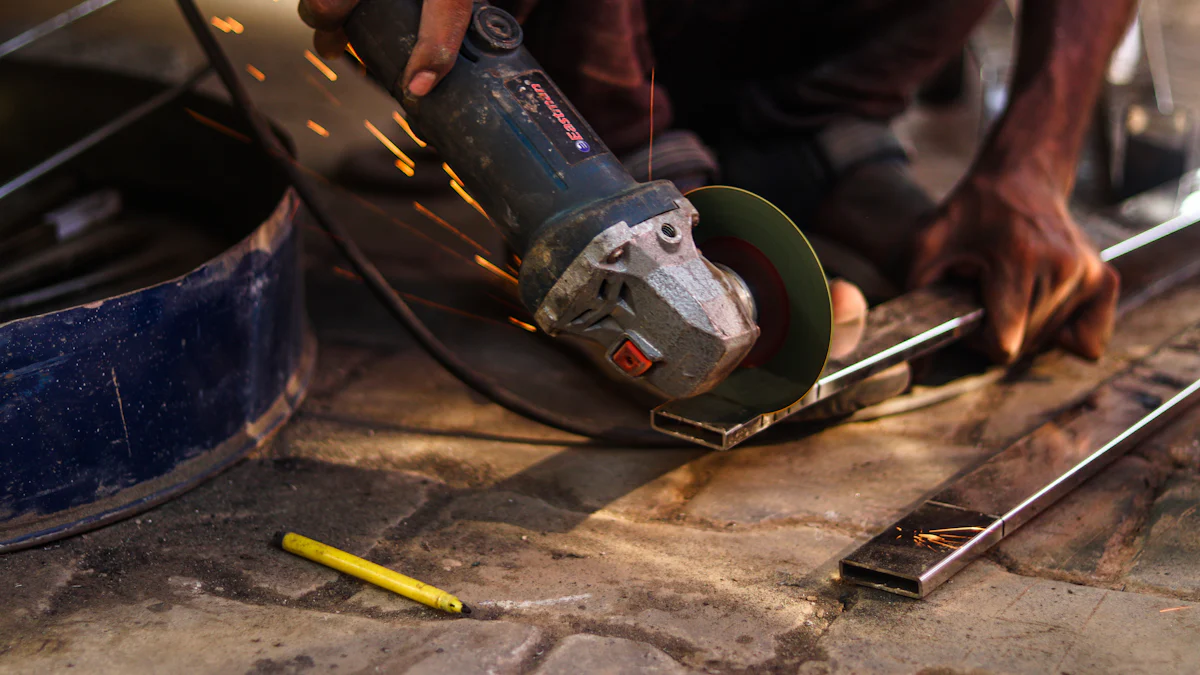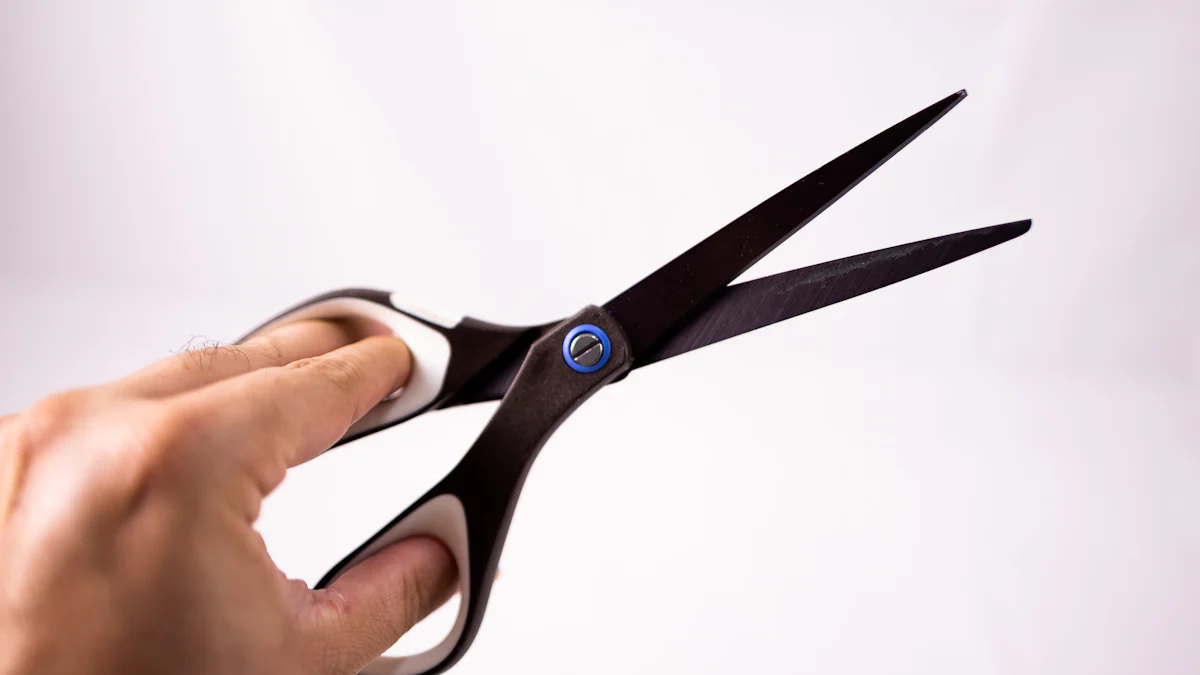In the realm of modeling, precision reigns supreme. The meticulous craft demands nothing less than absolute accuracy in every cut and joint. Enter the angle cutting tool, the unsung hero of precision in model making. These tools are the artisans’ trusted companions, ensuring each slice is exact and each angle pristine. This guide delves into the world of angle cutting tools, unraveling their significance and unveiling the secrets to mastering their use.
Understanding Angle Cutting Tools
In the realm of precision crafting, angle cutting tools stand as indispensable assets for modelers and artisans alike. These tools embody the essence of accuracy, enabling craftsmen to achieve immaculate cuts and flawless angles in their projects. Understanding the intricacies of these tools is paramount to mastering the art of precision.
Definition and Importance
What is an Angle Cutting Tool?
An angle cutting tool is a specialized instrument designed to precisely cut materials at specific angles, ensuring clean and accurate results. These tools come in various forms, from manual devices to power-driven machines, each tailored to meet different cutting needs.
Why Precision Matters
Precision lies at the core of every successful modeling endeavor. The ability to make exact cuts at precise angles elevates a project from good to exceptional. An angle cutting tool serves as the gateway to achieving this level of accuracy, setting the foundation for impeccable craftsmanship.
Key Features
Degrees of Cutting
Angle cutting tools offer a range of cutting degrees, such as 45, 30, and 60 degrees, allowing craftsmen to select the angle that best suits their project requirements. This versatility empowers modelers to create intricate designs with ease and finesse.
Rake and Relief Angles
The rake angle of a cutting tool influences its cutting performance by affecting chip formation and material removal efficiency. Understanding the nuances of rake angles is crucial for optimizing cutting processes and enhancing overall productivity.
Applications
Woodworking
In woodworking applications, angle cutting tools play a vital role in shaping wood pieces with precision and finesse. From creating beveled edges to intricate joints, these tools enable woodworkers to bring their artistic visions to life with unparalleled accuracy.
Metalworking
Metalworkers rely on angle cutting tools for tasks that demand utmost precision, such as fabricating metal components with intricate angles and profiles. These tools ensure that each cut is executed flawlessly, resulting in high-quality metalwork products.
DIY Projects
For DIY enthusiasts embarking on home improvement ventures or creative projects, angle cutting tools serve as invaluable companions. Whether it’s crafting custom furniture pieces or tackling renovation tasks, these tools empower individuals to achieve professional-grade results with ease.
Types of Angle Cutting Tools

When it comes to angle cutting tools, the arsenal is diverse, catering to a wide range of cutting needs and preferences. From manual devices that offer precision control to power-driven machines that enhance efficiency, modelers have an array of options at their disposal. Let’s explore the distinct categories of angle cutting tools and their unique attributes.
Manual Tools
Miter Saws
Miter saws are stalwarts in the realm of woodworking, known for their ability to make accurate crosscuts and miter cuts at various angles. These manual tools feature a rotating blade that swiftly slices through wood with finesse, making them ideal for creating picture frames, door frames, and other angular structures.
Protractors
Protractors are essential companions for modelers seeking precise angle measurements. With clear markings and a pivoting arm, these manual tools allow craftsmen to determine and replicate specific angles accurately. Whether it’s marking out angles for intricate joints or verifying existing angles, protractors are indispensable in achieving geometric perfection.
Power Tools
Angle Grinders
Angle grinders are powerhouse tools designed for heavy-duty cutting tasks across different materials. Equipped with abrasive discs or grinding wheels, these power tools excel in shaping metal pieces with precision and speed. From removing excess material to smoothing rough edges, angle grinders offer versatility in metalworking projects.
Adjustable-Speed Cutters
Adjustable-speed cutters provide modelers with flexibility in controlling cutting depth and speed based on project requirements. These power tools feature adjustable settings that cater to various materials and cutting angles, allowing craftsmen to achieve customized results with ease. Whether it’s fine-tuning the cutting speed or adapting to different material densities, adjustable-speed cutters offer adaptability in precision cutting tasks.
Specialized Tools
Precision Angle Cutters
Precision angle cutters are crafted for meticulous tasks that demand utmost accuracy and consistency. These specialized tools ensure razor-sharp cuts at precise angles, making them indispensable for intricate model-making projects where precision is non-negotiable. With advanced features and ergonomic designs, precision angle cutters elevate the art of precision cutting to new heights.
Customizable Tools
For modelers with unique cutting requirements or specialized projects, customizable tools offer tailored solutions for achieving specific angles and dimensions. These versatile tools can be adapted to suit individual preferences and project specifications, providing craftsmen with the freedom to explore creative possibilities without limitations.
Tips for Precision Cutting

When it comes to achieving precision in your cutting endeavors, the selection of the right angle cutting tool is paramount. The process begins with a meticulous assessment of your project’s requirements, ensuring that the chosen tool aligns perfectly with the task at hand.
Tool Selection
Choosing the Right Tool
Selecting an appropriate angle cutting tool involves considering various factors such as the material you intend to cut, the required angle precision, and the complexity of the design. For intricate projects demanding utmost accuracy, opt for precision angle cutters that guarantee razor-sharp cuts at precise angles. Conversely, for more versatile applications across different materials, adjustable-speed cutters provide flexibility in controlling cutting depth and speed.
Considering Material Type
Different materials pose unique challenges when it comes to precision cutting. Wood requires tools that can deliver clean cuts without splintering or chipping, making miter saws an ideal choice. On the other hand, metalworking demands robust tools like angle grinders that can handle tough materials with ease. By matching the angle cutting tool to the specific material characteristics, you ensure seamless and precise cutting results.
Technique
Proper Handling
The efficacy of an angle cutting tool hinges on proper handling techniques. Ensure a stable work surface and a secure grip on the tool to maintain control over each cut. Smooth and consistent movements reduce errors and enhance overall precision in your crafting endeavors.
Maintaining Consistency
Consistency is key to achieving uniformity in your cuts. Establishing a rhythm and pace that suits your workflow minimizes deviations and ensures that each cut mirrors the previous one with exactitude. By maintaining a steady hand and focus throughout the cutting process, you elevate your craftsmanship to new levels of precision.
Maintenance
Regular Cleaning
To uphold optimal performance from your angle cutting tool, regular cleaning is essential. Remove debris and buildup from blades or discs to prevent frictional resistance during cuts. A clean tool not only operates smoothly but also extends its lifespan for prolonged use.
Sharpening and Calibration
Periodic sharpening and calibration are crucial maintenance tasks for preserving cutting accuracy. Dull blades compromise precision by causing rough edges or imprecise cuts. By sharpening blades regularly and calibrating angles as needed, you ensure that your angle cutting tool remains a reliable companion in your pursuit of perfection.
Precision is the cornerstone of every successful modeling project, and angle cutting tools are the unsung heroes that make precision a reality. By understanding the nuances of these tools and selecting the right one for each task, modelers can elevate their craftsmanship to new heights. The journey towards mastering precision cutting is a continuous learning process, where each project offers an opportunity to refine skills and explore creative possibilities.
